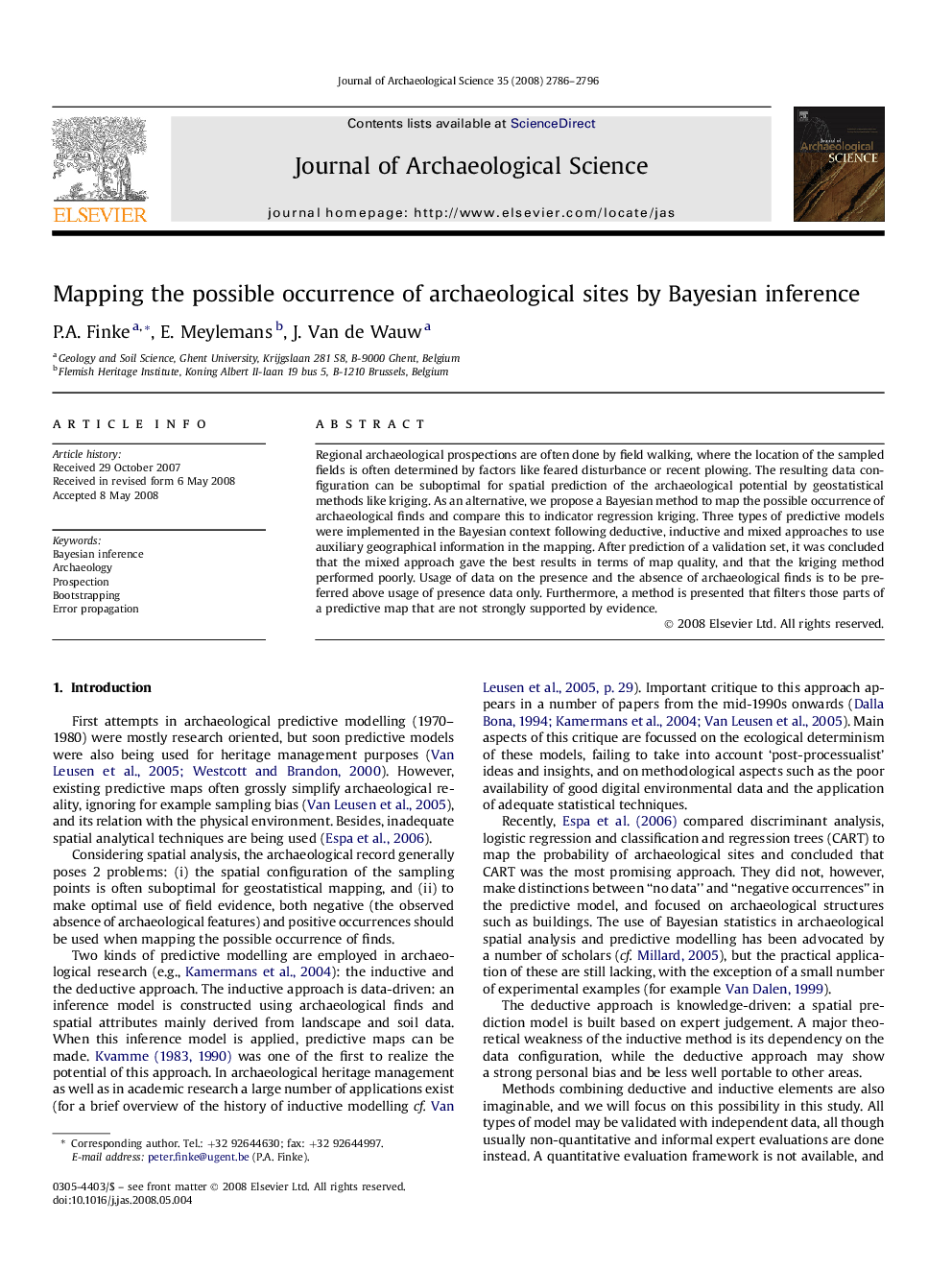| Article ID | Journal | Published Year | Pages | File Type |
|---|---|---|---|---|
| 1037308 | Journal of Archaeological Science | 2008 | 11 Pages |
Regional archaeological prospections are often done by field walking, where the location of the sampled fields is often determined by factors like feared disturbance or recent plowing. The resulting data configuration can be suboptimal for spatial prediction of the archaeological potential by geostatistical methods like kriging. As an alternative, we propose a Bayesian method to map the possible occurrence of archaeological finds and compare this to indicator regression kriging. Three types of predictive models were implemented in the Bayesian context following deductive, inductive and mixed approaches to use auxiliary geographical information in the mapping. After prediction of a validation set, it was concluded that the mixed approach gave the best results in terms of map quality, and that the kriging method performed poorly. Usage of data on the presence and the absence of archaeological finds is to be preferred above usage of presence data only. Furthermore, a method is presented that filters those parts of a predictive map that are not strongly supported by evidence.
